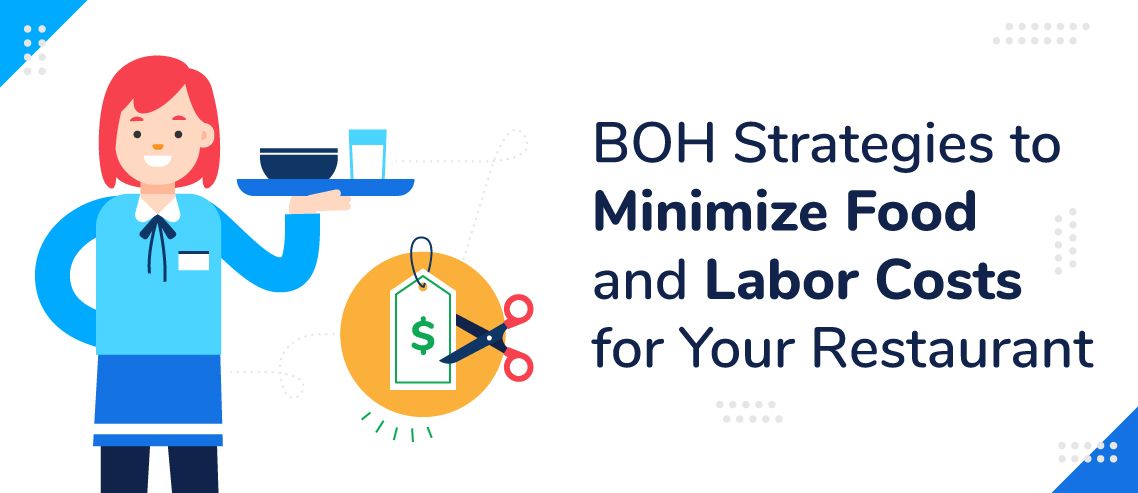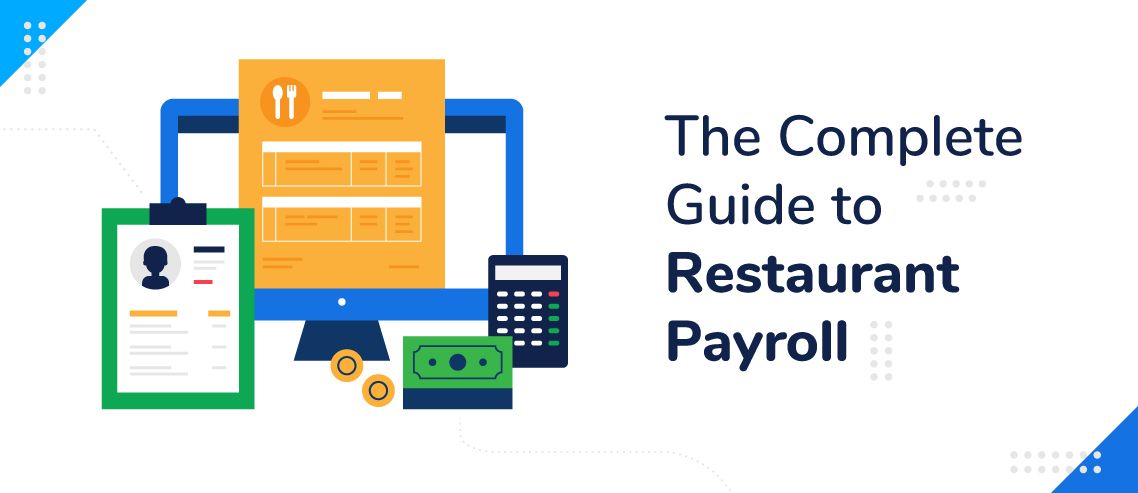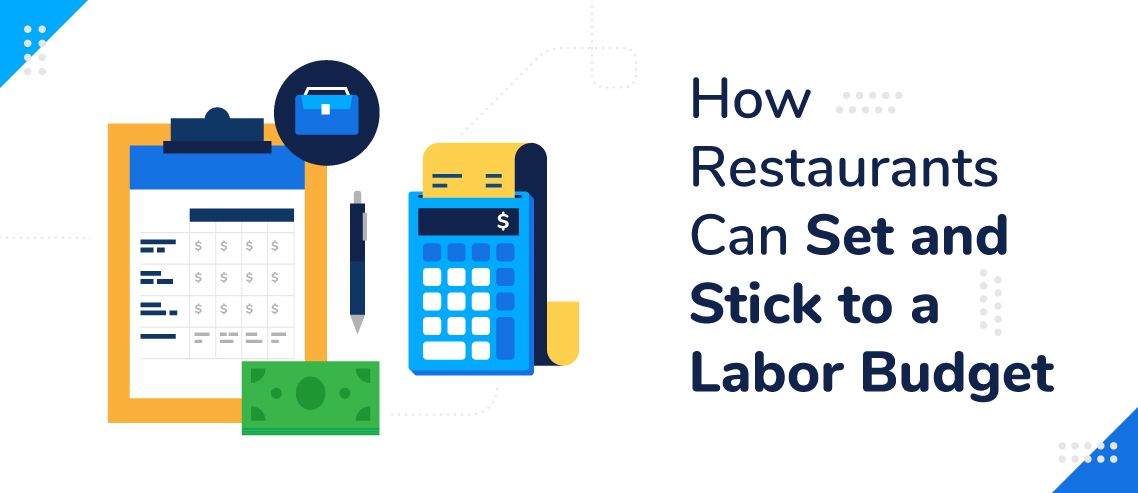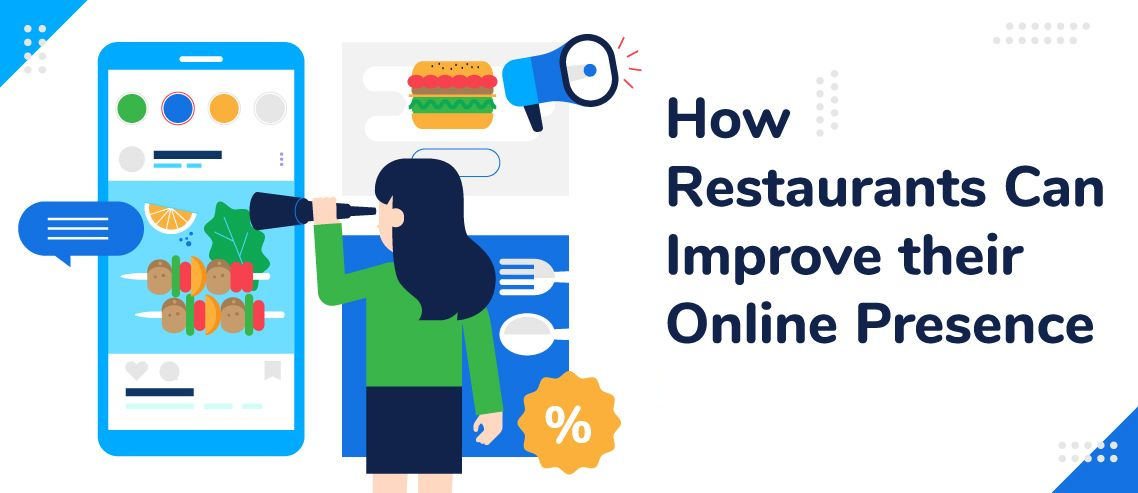6 BOH Strategies to Minimize Food and Labor Costs for Your Restaurant

Of the many expenses that go into running and maintaining a restaurant, labor and food costs are the two most important. Maintaining these costs and making sure they don’t cut into your profits is not easy, but these strategies are a great way to get started:
What is the back-of-house in a restaurant?
A restaurant’s back-of-house (BOH) serves as the central hub of its operations and doesn’t interact directly with customers.
For most restaurants, the BOH includes the kitchen, break rooms, storage areas, offices, and other areas that aren’t visible to guests. You can find kitchen managers, chefs, line cooks, and dishwashers prepping, stocking, and preparing food items here.
How to calculate food costs
Food costs are one of the largest expenses for restaurants, making up the amount of money you spend on ingredients and food supplies. This is one of the biggest variable costs for restaurants and can be managed properly with the right tools.
Calculating and understanding this percentage helps you visualize how much money goes into each of your menu items. Visibility and control over food costs will help guide your decisions on building a profitable menu and ultimately increasing your bottom line.
The formula to calculate your food cost per recipe is as follows:
Food Cost Per Recipe = Cost to Prepare/Menu Price x 100
Note: Your food cost will always be calculated as a percentage
How to save on food costs
Prioritizing delivery and takeout has changed the way we operate, and it’s integral to adjust your operations to save big on food costs. Here are a few ways you can get started.
1. Optimize Your Menu
Take a look at your menu and have a plan to trim certain items. Do you offer garnishes, sauces, or spices that usually go unnoticed? These are great examples of food that quickly become waste and drain your wallet.
The first step is to rank your menu items by sales volume. Then, calculate the ingredients that go into each dish and categorize the menu items using this matrix:
Stars are menu items that are the most popular and profitable. Keep these items the way they were and offer them as specials from time to time.
Cows are menu items that are in high demand but don’t significantly contribute to your profits. Consider raising the price of these items over time.
Question marks are items that are not very popular but have high-profit margins. Place your question mark items in noticeable areas of your menu and use photos to bring more attention to them.
Dogs are menu items that aren’t in high demand nor profitable. Consider creating promotions for these less popular items and remove them from your menu entirely if sales for them are still low.
By reducing your menu you’ll improve meal prep time, order fewer ingredients, and minimize indoor dining turnaround times.
2. Count Your Inventory Regularly
Counting inventory regularly is important to identify instances of waste, theft, or non-theft losses.
Since 10% of food is wasted even before it’s served, spotting waste events is crucial in understanding where your costs may be slipping through the cracks and stopping them before they happen.
By counting your inventory on a scheduled, regular basis, you’ll gain visibility and control of the ever-changing, always moving BOH beast that is inventory.
Using an inventory management solution like MarketMan gives you further insight into your inventory by sending you real-time alerts when items are running low and keeping track of waste events through mobile use.
3. Reduce Portions
Reducing your dishes’ portion sizes is an effective way to stay on top of your food costs. Ensure your staff uses consistent portion sizes by handing out reference charts and instructions. This will minimize food waste, decrease spending on ingredients, and reduce the risk of over portioning.
Negotiate with Suppliers
As you reduce portions, you’ll also be ordering fewer ingredients from your suppliers. Take note of which ingredients you order the most and negotiate their prices with your supplier before placing an order to ensure you’re getting the best price for your dishes. Finding the best prices for your ingredients can be time-consuming, but finding the best prices for the right quality will ultimately increase your bottom line.
To negotiate with your suppliers, ask them to price match a competitor, tailor your payment schedule, or reduce the minimum order level. Many suppliers are open to helping businesses through the pandemic so make sure to also ask if they’re able to provide a cheaper (but same quality) alternative as substitutes or offer any discounts.
How to calculate labor costs
Calculating labor costs is integral because it helps you evaluate profitability, understand how much of your sales are going to payroll, and spot any potential red flags with your staff. Next to food costs, labor costs make up one of the most important expenses in a restaurant, making up the sum of wages, salaries, benefits, healthcare, taxes of all your employees.
Every restaurant is different, with different goals and plans. That’s why there is no definitive answer on what the labor percentage should be for a restaurant. But, as a common rule of thumb, restaurants should aim to keep their labor cost percentage between 20 and 30%.
Calculate your labor cost percentage using these four steps:
- Calculate your total revenue
- Collect the sum of your labor costs
- Divide labor cost by revenue
- Multiply outcome by 100
Labor Cost Percentage = (Total Labor Cost / Total Revenue) x 100
How to save on labor costs
1. Invest in automation
In 2020, 37% of restaurant operators planned to reduce their labor costs with technology. With labor-saving technology, restaurateurs are able to increase efficiency and speed of service without cutting staff.
You may have staff working on tedious, time-consuming tasks that you can otherwise automate with restaurant technology. Investing in automation frees up your staff’s time to work on other areas of your business.
By reducing the time spent on tasks like counting inventory or placing orders using an inventory management solution, you can reallocate your labor budget to other areas of your business.
2. Evaluate operating hours
Let’s say that Stacy’s Pie Pizzeria’s operating hours are from 7 am – 10 pm. They receive online orders in large waves at around 11 am and 2 pm every day with the orders slowing down at 7 pm.
Stacy realizes that she can cut back on her operating hours on times she knows are not as profitable. By changing their hours of operation, Pie Pizzeria saves money on labor costs and becomes flexible in staff scheduling.
To gain more control over your staff shifts, hours, and scheduling mistakes, invest in scheduling software like ZoomShift.
3. Cross-train your staff
As restaurants are continuously adjusting their operations, more and more businesses are relying on online ordering and delivery. Consider moving your check-out to a point-of-sale (POS) system and offer mobile or contactless payment.
Cross-train employees that previously filled these roles to perform a variety of tasks throughout the business. This will enable you to make changes in a flexible environment improving efficiency increasing your bottom line.
As you cross-train employees, listen to your staff’s feedback. One main cause of high labor costs is significant employee turnover and the last thing you want is for your employees to be unhappy. To maintain a stable employee core foster the relationships between management and staff members.
Leading with empathy, vulnerability, and encouragement is the key to effective cost-cutting. In the end, you’ll gain the trust of your staff, improve job satisfaction, and retain your best employees.
Save time and money with technology
The right technology can help minimize your costs more efficiently. Make these steps easier with employee scheduling software like ZoomShift and inventory management solutions like MarketMan today.
JD enjoys teaching people how to use ZoomShift to save time spent on scheduling. He’s curious, likes learning new things everyday and playing the guitar (although it’s a work in progress).




